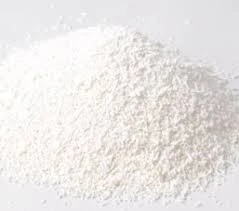
e415 food additive
Understanding E415 A Common Food Additive
In the ever-evolving world of food production, additives play a crucial role in enhancing the quality, safety, and longevity of our food. Among the multitude of food additives available, E415, also known as Xanthan Gum, stands out for its versatility and effectiveness. This ingredient, commonly used in the food industry, has garnered attention for both its functional properties and its origin.
What is E415?
E415 or Xanthan Gum is a polysaccharide derived from the fermentation of sugars, primarily using a bacterium called Xanthomonas campestris. This process results in a thickening agent that is frequently used in various food products to improve texture, stabilize ingredients, and prevent separation. It is often found in salad dressings, sauces, dairy products, and gluten-free baked goods, making it a popular choice in both commercial and homemade products.
Functional Properties
The primary function of E415 is to act as a thickening and stabilizing agent. It provides a desirable viscosity to liquids, allowing them to maintain their consistency over time. For instance, in salad dressings, E415 helps to keep oil and vinegar from separating, ensuring a uniform product. Additionally, Xanthan Gum's ability to help retain moisture makes it a favorite in gluten-free baking, as it can mimic the elasticity typically provided by gluten in wheat products.
Moreover, Xanthan Gum is known for its shear-thinning behavior. This means that its viscosity decreases when it is stirred or shaken, which is particularly useful in food preparations. Once the mixture is still, E415 returns to its thicker state, providing a smooth and appealing texture.
e415 food additive

Safety and Approval
E415 has been approved for use by numerous food safety authorities worldwide, including the European Food Safety Authority (EFSA) and the U.S. Food and Drug Administration (FDA). Studies indicate that Xanthan Gum is safe for consumption and does not pose significant health risks when used within recommended limits. In fact, it is often included in foods labeled for those with special dietary needs, such as gluten intolerance and food sensitivities.
Despite its safety, some individuals may experience digestive issues when consuming large amounts of Xanthan Gum, as it is a soluble fiber. It is always advisable to consult with a healthcare professional when incorporating new additives, especially for those with pre-existing health conditions.
Environmental Considerations
One noteworthy aspect of E415 is its production process. The fermentation method used to create Xanthan Gum is relatively eco-friendly, relying on renewable resources such as corn or wheat sugars. However, sourcing these materials raises questions about agricultural practices and the environmental impact of growing these crops. As consumers become more conscious of sustainable practices, the food industry is increasingly looking for ways to minimize its ecological footprint.
Conclusion
In conclusion, E415 or Xanthan Gum serves as an essential additive in the modern food landscape. Its functional properties contribute to the stability, texture, and shelf-life of various products, making it invaluable to manufacturers and consumers alike. With a robust safety profile and a versatile range of applications, Xanthan Gum is likely to remain a staple in food production. As food technology evolves, continued research and development will ensure that additives like E415 are utilized safely and sustainably, maintaining the delicate balance between food quality and consumer health. Understanding these ingredients equips consumers with the knowledge to make informed choices about their diets, promoting a healthier lifestyle in the process.
-
Buy High-Quality Trichloroisocyanuric Acid for Sale | TCCA 90% SupplierNewsAug.30,2025
-
Pure Sodium Dichloroisocyanurate Dihydrate | Powerful DisinfectantNewsAug.29,2025
-
Industrial Chemicals: Quality & Purity for Every IndustryNewsAug.28,2025
-
Nitrile Rubber Honoring Strict Production StandardsNewsAug.22,2025
-
Aspartame Ingredients Honoring Food Safety ValuesNewsAug.22,2025
-
Fertilizer for Balanced Plant NutritionNewsAug.22,2025
-
Cyanide Gold Processing with High Purity AdditivesNewsAug.22,2025
Hebei Tenger Chemical Technology Co., Ltd. focuses on the chemical industry and is committed to the export service of chemical raw materials.
-

view more DiethanolisopropanolamineIn the ever-growing field of chemical solutions, diethanolisopropanolamine (DEIPA) stands out as a versatile and important compound. Due to its unique chemical structure and properties, DEIPA is of interest to various industries including construction, personal care, and agriculture. -

view more TriisopropanolamineTriisopropanolamine (TIPA) alkanol amine substance, is a kind of alcohol amine compound with amino and alcohol hydroxyl, and because of its molecules contains both amino and hydroxyl. -

view more Tetramethyl Thiuram DisulfideTetramethyl thiuram disulfide, also known as TMTD, is a white to light-yellow powder with a distinct sulfur-like odor. It is soluble in organic solvents such as benzene, acetone, and ethyl acetate, making it highly versatile for use in different formulations. TMTD is known for its excellent vulcanization acceleration properties, which makes it a key ingredient in the production of rubber products. Additionally, it acts as an effective fungicide and bactericide, making it valuable in agricultural applications. Its high purity and stability ensure consistent performance, making it a preferred choice for manufacturers across various industries.





